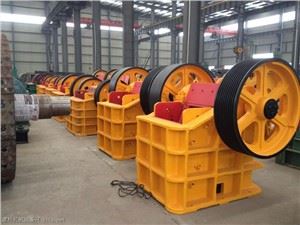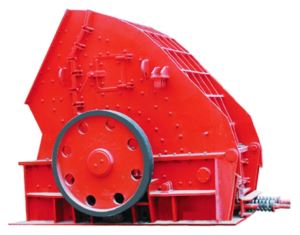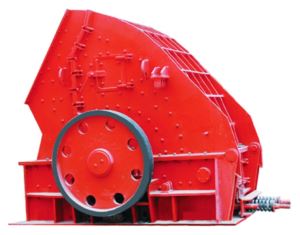Working Principle Of Hydraulic Overload Protection Device Of
The hydraulic overload protection device of jaw crusher is mainly composed of working hydraulic cylinder, accumulator, plunger fuel injection pump, cam device, oil pressure regulating device, action valve, oil filter and oil tank.
Component function
1) Working hydraulic cylinder
Provide the thrust required for the normal operation of the thrust plate of the jaw crusher. When overload, the oil pressure in the cylinder increases, and the piston moves to the right to retract to limit the maximum crushing force of the crusher.
2) Energy storage
Reduce the oil pressure pulsation of the hydraulic system, so that the action valve can accurately move and drain the oil when overloaded.
3) Cam device
It is a mechanical energy input device for the plunger of a plunger type fuel injection pump to move up and down.
4) Oil pressure regulating device
According to the increase or decrease of the system oil pressure, through the action of the small internal piston, the fork-pull mechanism drives the plunger of the plunger fuel injection pump to rotate an angle counterclockwise or clockwise.
5) Plunger injection pump
Provide high-pressure oil to the system. A spiral chute is milled on the cylindrical surface of the plunger. There are holes in the groove to communicate with the pump cavity above the plunger. The plunger sleeve has an oil inlet and an oil return hole. The effective stroke of the pump oil is determined by the relative position of the plunger and the plunger sleeve. When the plunger rotates counterclockwise, the effective stroke decreases and the pump oil is less; on the contrary, the pump oil increases.
6) Action valve
It is a self-designed device. There are two pistons with different areas. When the pressure in the upper chamber is higher than the pressure in the lower chamber, the piston moves down to drain the upper chamber; when the pressure in the upper chamber is lower than or equal to the pressure in the lower chamber, the piston At the upper limit position, the drain port is blocked and the hydraulic system is in normal working condition.
work process
The hydraulic overload protection device adopts an oil pressure adjusting device to adjust the effective pump oil stroke of the plunger fuel injection pump, and automatically adjust the oil injection volume according to the amount of oil leakage in the hydraulic system. The working cylinder uses bolts to limit the limit elongation position, which overcomes the movement of the jaws. The oil pressure pulse of the hydraulic system facilitates the adjustment of the discharge port.
During the working process of the equipment, through the rotation of the cam device, the plunger fuel injection pump is driven to supply high pressure oil to the system. The system oil pressure is adjusted by the adjusting nut of the oil pressure adjusting device according to the allowable maximum crushing force of the crusher. When the oil pressure rises, the plunger compression spring in the oil pressure adjusting device moves to the right, driving the plunger of the plunger injection pump counterclockwise. Rotate in the direction to shorten the effective stroke of the plunger to reduce the oil injection volume and limit the increase in system oil pressure; conversely, when the system oil pressure drops, increase the oil injection volume to prevent the decrease in system oil pressure and keep the hydraulic system oil pressure at the initial set pressure .
1) Normal work
The pressure of the crusher thrust plate acting on the working hydraulic cylinder is less than the hydraulic cylinder thrust, the action valve is at the upper limit position, the thrust plate does not move, and the crusher normally crushes materials.
2) Overload protection
When the crushing chamber of the jaw crusher enters the non-crushing object, the crushing force increases. At this time, the pressure of the jaw crusher thrust plate acting on the working hydraulic cylinder is greater than the thrust provided by the hydraulic cylinder, and the working hydraulic cylinder is in the high-pressure oil chamber When the oil pressure rises instantaneously, the throttle valve causes the action valve to act, and the system (hydraulic cylinder) drains oil to limit the maximum thrust of the thrust plate (ie, the maximum crushing force) to protect the machine.
3) Troubleshoot
After the non-crushed material enters the crushing cavity, due to the maximum thrust that the working hydraulic cylinder can provide, the piston moves to the right and retracts, and the crusher discharge port increases accordingly. Due to the engagement of the crushing mobile jaws, the non-crushed material gradually moves downward. It moves and is finally discharged from the discharge port, automatically removing non-crushed objects in the crushing cavity. If the "product" produced by the non-crushed material in the crushing cavity is unqualified, it can be rejected by the auxiliary device.
4) Automatic recovery
When the non-broken objects are automatically removed, the piston is in the retracted position. Due to the reduction of the crushing force, the action valve restores the spool to the upper limit position without the instantaneous high pressure of the upper cavity, and no longer drains the system; at the same time, the plunger type The fuel injection pump pumps oil to the system with the maximum pumping volume under the action of the oil pressure adjusting device until the piston of the working hydraulic cylinder moves to the extreme left. At this point, the crusher has returned to normal working conditions.






